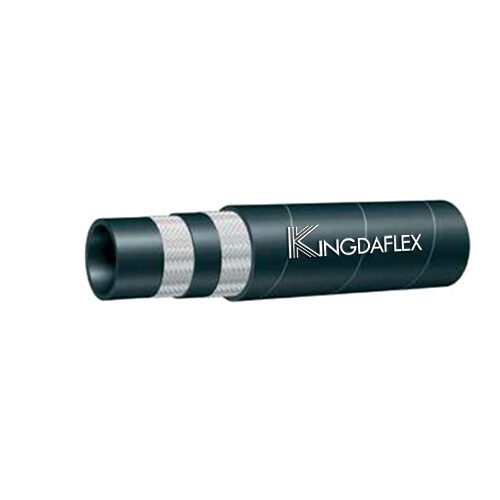When it comes to hoses, there are a lot of different options to choose from. One type of hose that you may have heard of is a textile braided hose.
This type of hose is used in a wide range of applications and has a number of benefits that make it a popular choice among hydraulic hose manufacturers and consumers alike.
In this article, we’ll take a closer look at textile braided hoses, including what they are, how they’re made, and where they’re commonly used.
What Is A Textile Braided Hose?
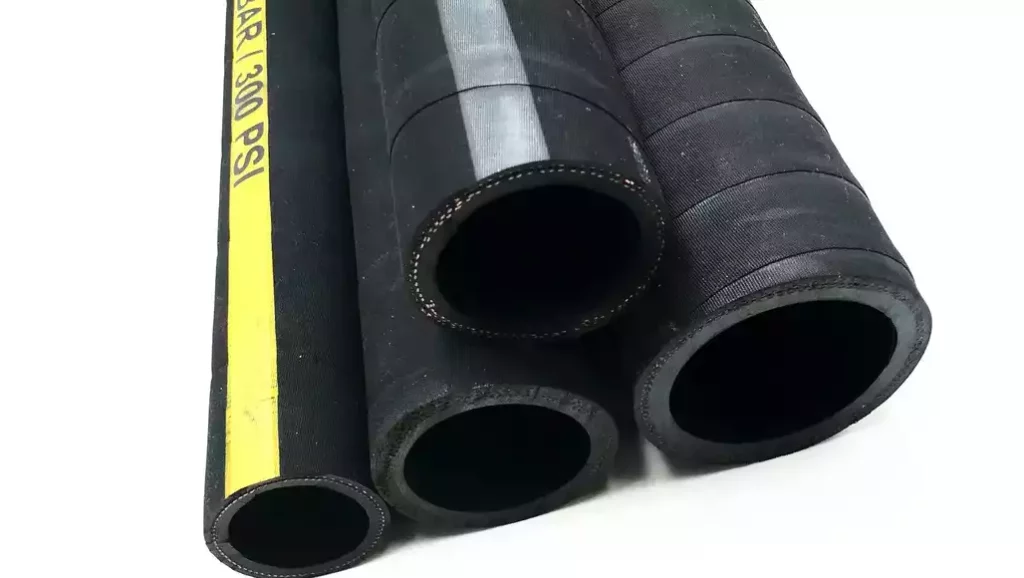
A textile braided hose is one of the types of hydraulic hose that is made up of several layers of fabric or yarn. The inner layer of the hose is typically made from a synthetic rubber material, while the reinforcement layer is made from a woven textile material.
The layers are then bound together using a special adhesive or vulcanization process. The result is a hose that is strong, flexible, and durable.
Compared with the wire-reinforced hose, textile braiding reinforced hydraulic hoses are designed to be used for medium to low-pressure working conditions for hydraulic hose applications.
SAE 100R3 and SAE 100R6 Hydraulic Hoses Include Textile Braided Reinforcement
SAE 100R3 Hydraulic Hose:
Construction: Consists of a synthetic rubber tube, a high-tensile steel wire braid reinforcement, and a synthetic rubber cover.
SAE 100R6 Hydraulic Hose:
Construction: Similar to SAE 100R3, but with a thicker wire braid reinforcement.
Note: Both SAE 100R3 and SAE 100R6 typically use steel wire braid reinforcement. However, there are variations available with textile braided reinforcement. Textile braided hoses offer a balance of flexibility and strength, making them suitable for applications that require both characteristics.
Key differences between wire braided and textile braided hoses:
| Feature | Wire Braided | Textile Braided |
|---|---|---|
| Flexibility | Generally less flexible | More flexible |
| Strength | Higher strength | Good strength |
| Abrasion resistance | Good | Excellent |
| Cost | Generally higher | Lower |
Choosing the right hydraulic hose reinforcement:
- Wire braided: Ideal for high-pressure applications and environments with high abrasion.
- Textile braided: Suitable for applications requiring flexibility and good abrasion resistance, but may not be suitable for extremely high pressures.
By considering the specific requirements of your application, you can select the appropriate reinforcement type for your hydraulic hose.
How Are Textile Braided Hoses Made?
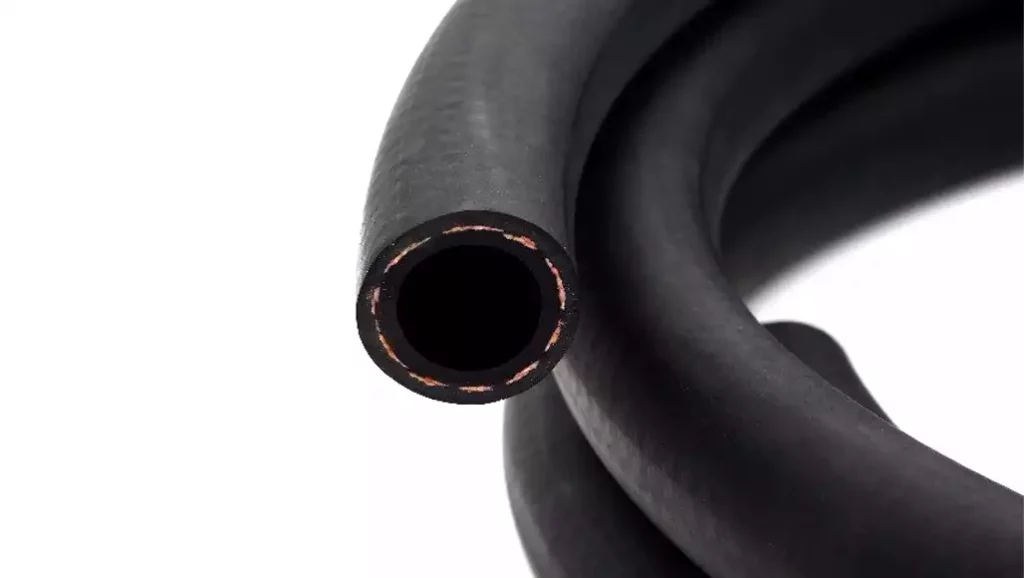
The process of making a braided textile hose involves several steps.
First, the inner layer of the hose is created by extruding synthetic rubber material into a tube shape. Next, the textile material for the outer layer is woven into a tube shape. The two tubes are then bonded together using a special adhesive or vulcanization process. The resulting hose is then tested to meet the required specifications.
Here is a step-by-step process for making textile braided hoses:
- Fiber selection: The first step in making a textile braided hose is selecting the appropriate fibers to use. Synthetic or natural fibers such as polyester, nylon, or aramid are typically used for their strength and durability.
- Braiding: The selected fibers are then woven together using a specialized braiding machine. The machine may use different patterns or weaves to create the desired level of strength and flexibility in the hose.
- Inner tube installation: After the braiding process, an inner tube made of rubber, plastic, or other materials are inserted into the braided fibers. This inner tube provides a smooth, non-porous surface for fluids to flow through and helps reinforce the hose.
- Cover application: A cover layer is then applied to the hose to protect it from abrasion, weather, and other environmental factors. This cover layer may be made of materials such as neoprene, PVC, or polyurethane.
- Curing: Once the cover layer has been applied, the hose is cured to ensure that the materials bond together properly. This may involve subjecting the hose to high temperatures or pressure in a specialized curing chamber.
- Testing: After the hose has been cured, it is tested to ensure that it meets the manufacturer’s specifications for quality and performance. This may involve subjecting the hose to high pressures or temperatures to check for leaks or other issues.
The process of making a textile braided hose requires specialized knowledge and equipment, as well as strict adherence to manufacturing standards. Also, hydraulic hose manufacturing process is here for your conference.
By using high-quality materials and following proper manufacturing procedures, the hydraulic hose manufacturer can produce hoses that are strong, flexible, and reliable for use in a wide range of applications.
Textile Braided vs. Wire Braided Hydraulic Hose
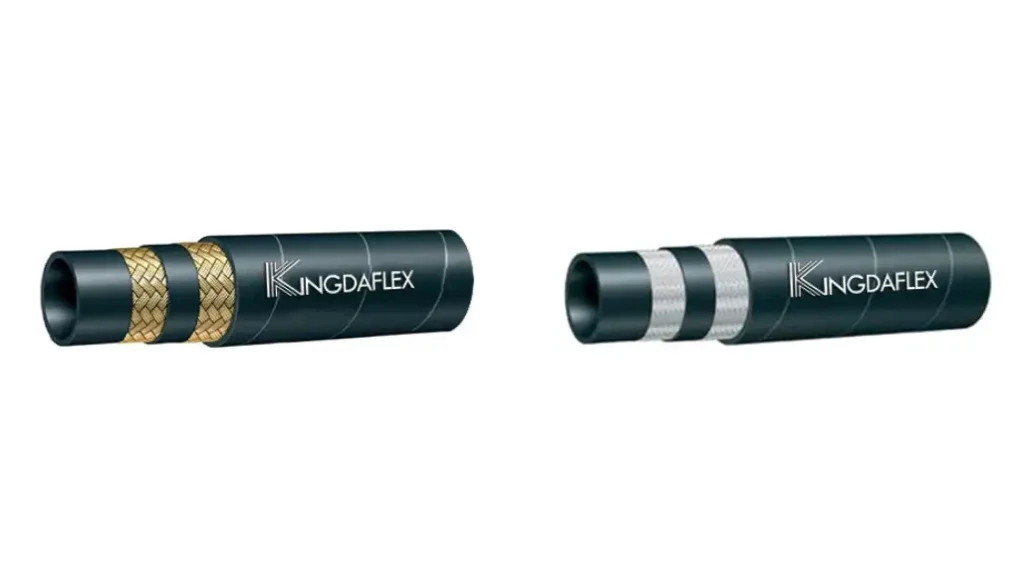
Both textile braided and wire braided hydraulic hoses are commonly used in industrial applications, each offering distinct advantages and disadvantages.
Textile Braided Hydraulic Hose:
- Construction: Consists of a synthetic rubber tube, a textile braid reinforcement, and a synthetic rubber cover.
- Advantages:
- Flexibility: Highly flexible, making it easier to maneuver and route in confined spaces.
- Abrasion resistance: Excellent resistance to abrasion, making it suitable for harsh environments.
- Cost-effective: Generally more cost-effective than wire braided hoses.
- Disadvantages:
- Lower pressure rating: Typically has a lower pressure rating compared to wire braided hoses.
- Reduced burst resistance: May not be as resistant to bursting under extreme pressure.
Wire Braided Hydraulic Hose:
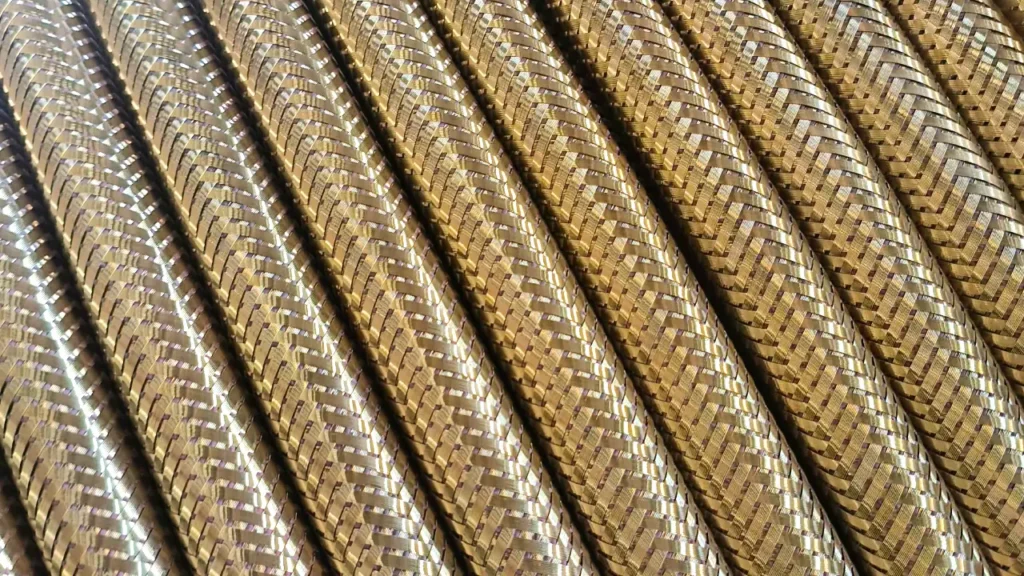
- Construction: Consists of a synthetic rubber tube, a steel wire braid reinforcement, and a synthetic rubber cover.
- Advantages:
- High pressure rating: Can withstand higher pressures compared to textile braided hoses.
- Excellent burst resistance: Highly resistant to bursting, making it suitable for demanding applications.
- Durability: Durable and long-lasting, especially in harsh environments.
- Disadvantages:
- Less flexible: Less flexible than textile braided hoses, making it more difficult to maneuver.
- Higher cost: Generally more expensive than textile braided hoses.
Choosing the right hydraulic hose:
The choice between textile braided and wire braided hydraulic hose depends on the specific requirements of your application. Consider the following factors:
- Pressure: If your application requires high pressure, wire braided hose is typically a better choice.
- Flexibility: If flexibility is a priority, textile braided hose is a good option.
- Abrasion resistance: Both types offer good abrasion resistance, but textile braided hoses may be slightly better in this regard.
- Cost: If cost is a major concern, textile braided hoses are generally more affordable.
By carefully evaluating these factors, you can select the most appropriate hydraulic hose for your specific needs.
Benefits of Textile Braided Hoses
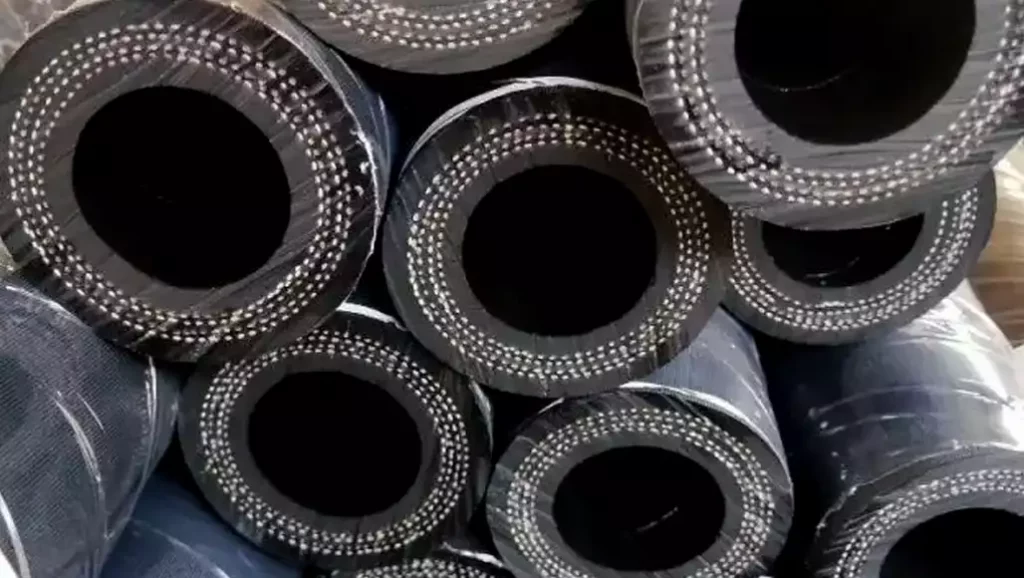
There are several benefits to using textile braided hoses. One of the main benefits is their strength and durability. The layers of fabric or yarn in the hose provide added strength and flexibility, making them ideal for use in applications where the hose will be exposed to a lot of wear and tear.
Another benefit of these hoses is their ability to handle high temperatures and pressures. This makes them a popular choice for use in hydraulic systems and other applications where high temperatures and pressures are common.
- Flexibility: Textile braided hoses are highly flexible, making them ideal for use in applications where the hose needs to bend or twist.
- Strength: The multiple layers of fibers used in textile braided hoses provide high tensile strength, making them resistant to kinking and crushing.
- Durability: Textile braided hoses are highly durable and can withstand a wide range of temperatures, pressures, and environmental factors.
- Resistance to abrasion: The cover layer applied to textile braided hoses helps to protect the hose from abrasion and wear, extending the hose’s lifespan.
- Light weight: Textile braided hoses are generally lighter in weight than other types of hoses, making them easier to handle and maneuver.
- Versatility: Textile braided hoses are suitable for use in a wide range of applications, including those involving air, water, oil, and other fluids.
- Cost-effective: Textile braided hoses are often more affordable than other types of hoses, making them a cost-effective choice for many applications.
Common Applications of Textile Braided Hoses
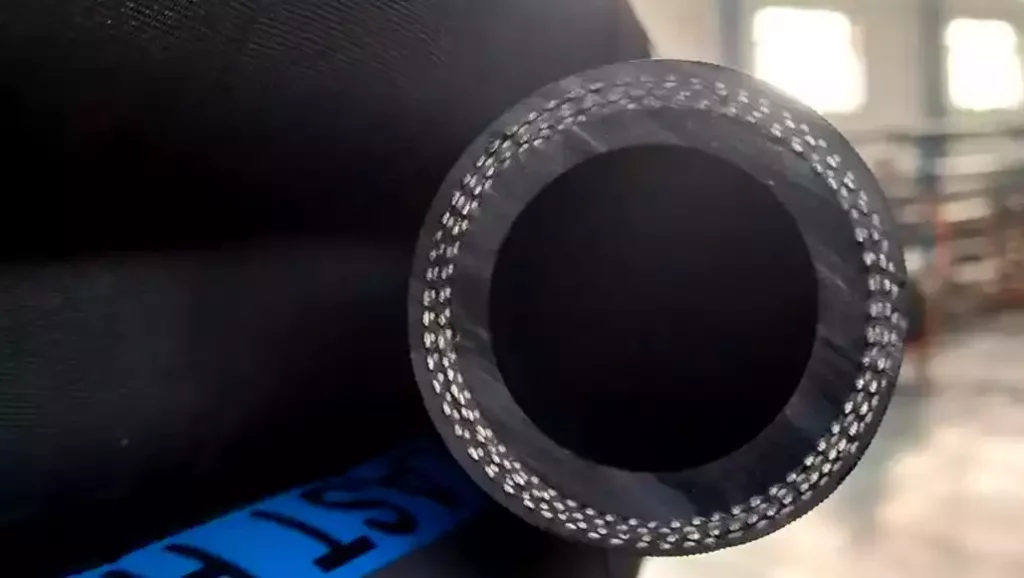
Textile braided hoses are used in a wide range of applications, from irrigation systems to hydraulic machinery. Some common applications include:
- Hydraulic systems
- Irrigation systems
- Automotive fuel lines
- Air conditioning systems
- Chemical transfer
Choosing the Right Textile Braided Hose
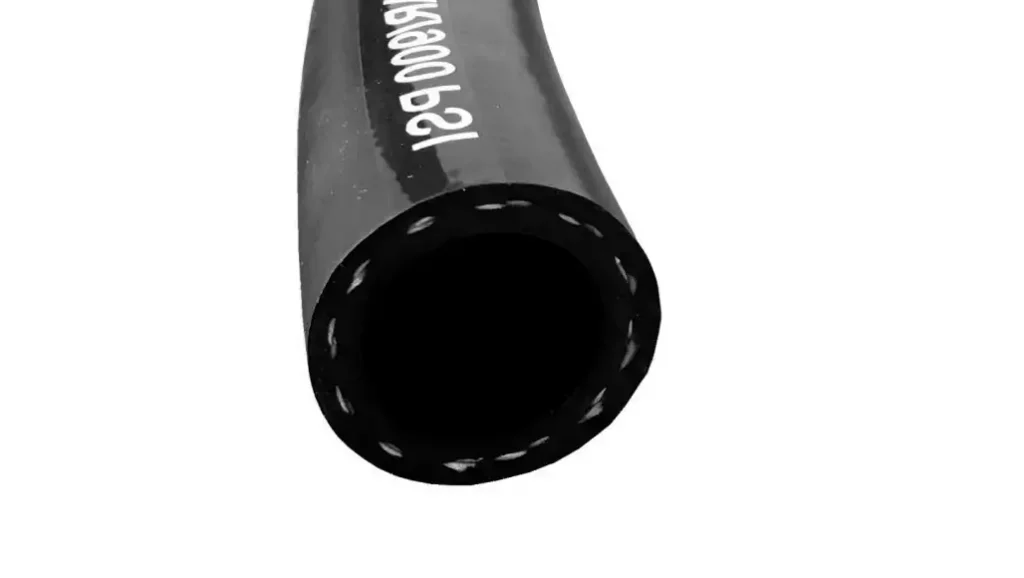
When choosing a textile braided hose, there are several factors to consider. One of the most important factors is the size of the hose.
The size of the hydraulic hose will determine its flow rate and the amount of pressure it can handle. Other factors to consider include the type of material the hose is made from, the temperature and pressure ratings, and the length of the hose. How to Choose A Hydraulic Hose? [STAMPED Hose Selection Guide]
Maintenance and Care of Textile Braided Hoses
Proper maintenance and care of your textile braided hose can help prolong its lifespan and prevent damage. Here are a few tips: Why Your Hydraulic Hose Is Broken? Here Are Some Common Hydraulic Hose Damage Reasons
- Inspect your hose regularly for any signs of wear and tear, such as cracks or fraying.
- Clean your hose regularly to remove any dirt or debris that could cause damage or clog the hose.
- Store your hose properly when not in use, coiled neatly and away from any sources of heat or sunlight.
- Follow the manufacturer’s instructions for any specific maintenance or care requirements.
Frequently Asked Questions
Can textile braided hoses be used for drinking water?
Yes, some textile braided hoses are approved for use with drinking water. Be sure to check the manufacturer’s specifications before using the hose with potable water.
How do I choose the right size textile braided hose?
The size of the hose will depend on the specific application and the flow rate and pressure requirements. Consult with a professional or refer to the manufacturer’s specifications for guidance.
How do I connect a textile braided hose to other components?
This will depend on the specific application and the components being used. Consult with a professional or refer to the manufacturer’s instructions for guidance.
How long do textile braided hoses last?
The lifespan of a textile braided hose will depend on a number of factors, including the specific application, the environment in which it’s used, and how well it’s maintained. In general, textile braided hoses can last several years with proper care and maintenance.
Can textile braided hoses handle high temperatures?
Yes, textile braided hoses are designed to handle high temperatures and pressures, making them a popular choice for use in hydraulic systems and other applications where these conditions are common.
Conclusion
Textile braided hoses are a versatile and durable type of hose that is used in a wide range of applications. They offer a number of benefits, including strength, flexibility, and the ability to handle high temperatures and pressures.
By following the tips outlined in this article for choosing and maintaining your textile braided hose, you can ensure that it will provide reliable performance for years to come.
Whether you’re using textile braided hoses for hydraulic systems, irrigation, or chemical transfer, it’s essential to choose a high-quality hose that is appropriate for your specific application.
By doing so, you can ensure that your equipment runs smoothly and efficiently, with minimal downtime or maintenance issues.

